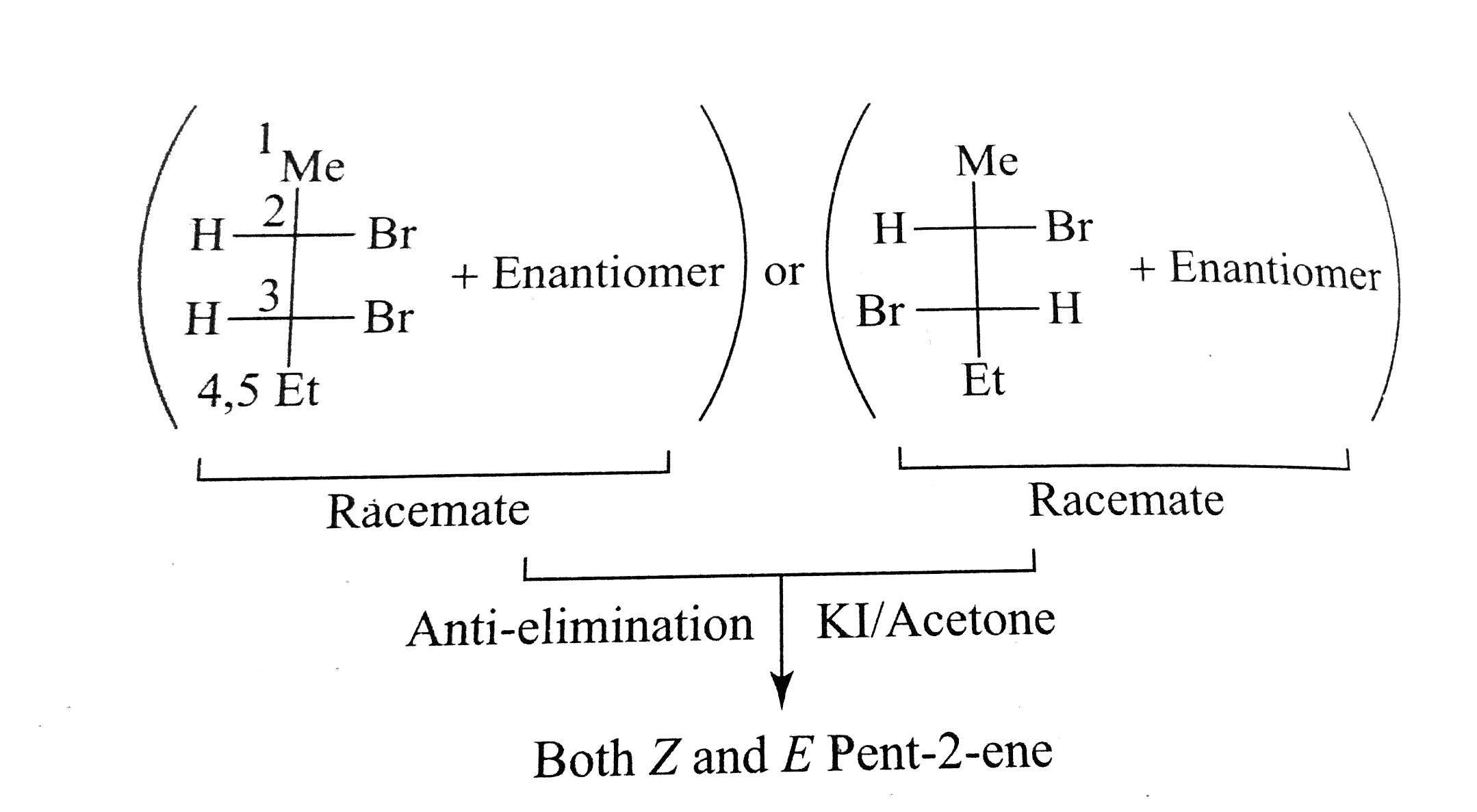The racemic −2,3−dibromopentane on reaction with KI in acetone give :
E−Pent −2−ene
Z−Pent −2−2ene
Both(a)and(b)
None
The correct Answer is:c
2,2−Dibromopentane, meso isomer is not possible, since the two terminal groups are different.

Topper's Solved these Questions
- BOOK - CENGAGE CHEMISTRYCHAPTER - ALKENES AND ALKADIENESEXERCISE - Archives(ASSERTION-REASIOING)4videos
ALKENES AND ALKADIENES
- BOOK - CENGAGE CHEMISTRYCHAPTER - ALKENES AND ALKADIENESEXERCISE - Fill in the Blanks3videos
ALKENES AND ALKADIENES
- BOOK - CENGAGE CHEMISTRYCHAPTER - ALKENES AND ALKADIENESEXERCISE - Multiple Correct Answer Type41videos
ALKENES AND ALKADIENES
- BOOK - CENGAGE CHEMISTRYCHAPTER - ALKANES AND CYCLOALKANESEXERCISE - Archives13videos
ALKANES AND CYCLOALKANES
- BOOK - CENGAGE CHEMISTRYCHAPTER - ALKYNESEXERCISE - Exercises (Archives - Analytical and Desriptive Type)4videos
ALKYNES
Similar Questions
Iodoform is obtained by the reaction of acetone with hypoiodite but not with iodide I on. Explain.
(b) Optically active 2-iodobutane on treatment with Nal in acetone gives a product which does not show optical activity. Why?View SolutionMeso "2,3" -dibromo butane is treated with "KI" in acetone. The product formed is
Cis but-2-ene
Trans but-2-ene
But-1-ene
Both (A) and (b)View Solution
Knowledge Check
- Question 1 - Select One
Meso− and racemic −2,3−dibromobutane on reaction with Nal in acetone give :
AE−But−2−ene and Z−But−2−ene, respectivelyBZ−But−2−2ene and E−But−2−ene, respectivelyCBoth give E−But −2−eneDBoth give Z−But−2−ene - Question 2 - Select One
Acetone on reaction with NH3 gives
ADimer of acetoneBα-AminoacetoneCAmino acidDDiacetonamine. - Question 3 - Select One
Chloroform on reaction with acetone yields ,
AinsecticideBanalgesicCisocyanideDhypnotic
Acetone on reduction gives
View SolutionThe reaction of chloroform with acetone gives
View SolutionBimolecular reduction of acetone gives
View SolutionAcetone on treatment with sodium and ethanol gives
View SolutionStatement-I: Optically active 2-idoibutane on treatment with NaI in acetone undergoes racemisation.
Because Statement-II: Repeated Walden inversions on the reactant and its product evantually gives a racemic mixure.View Solution

